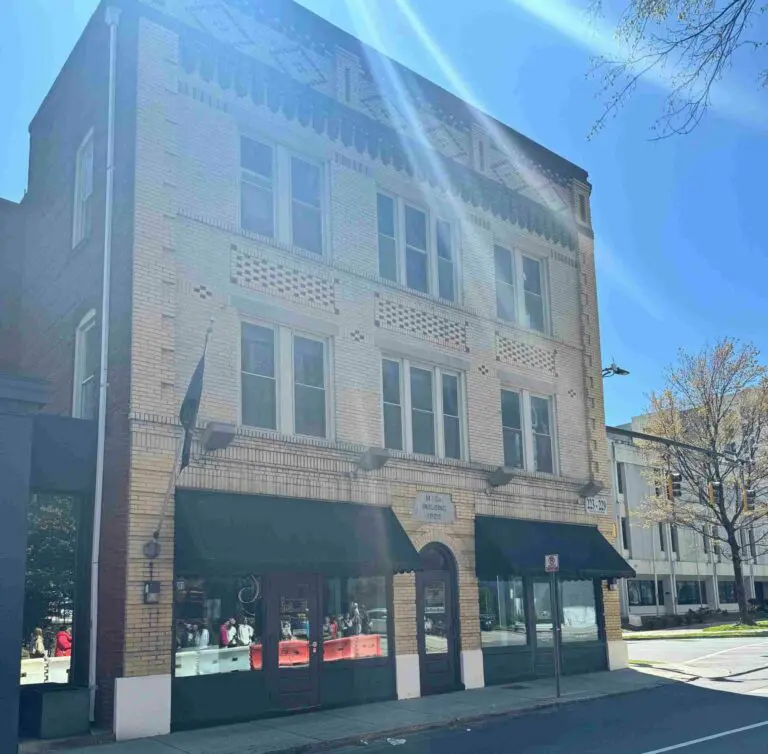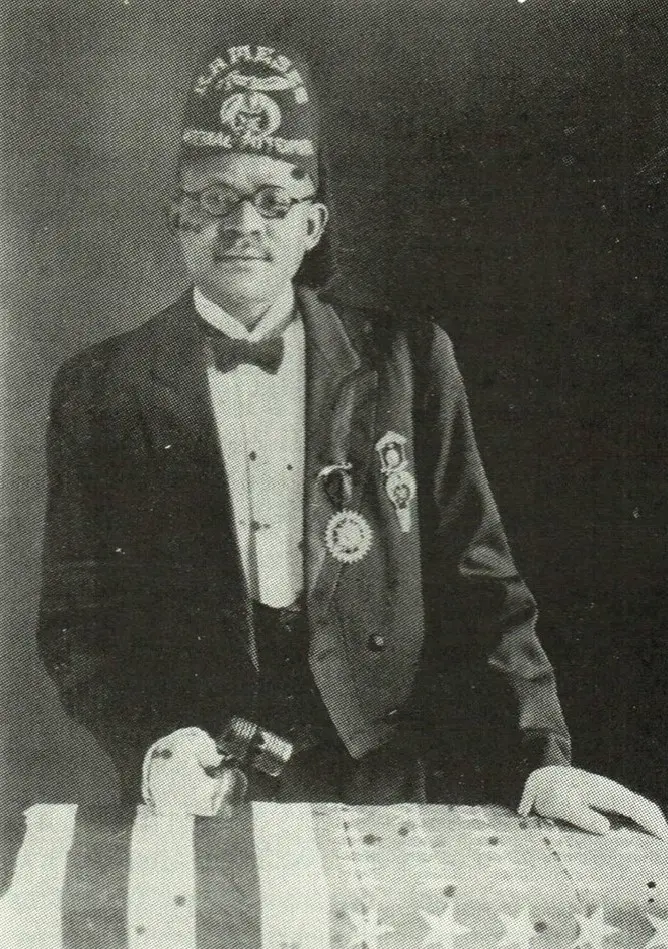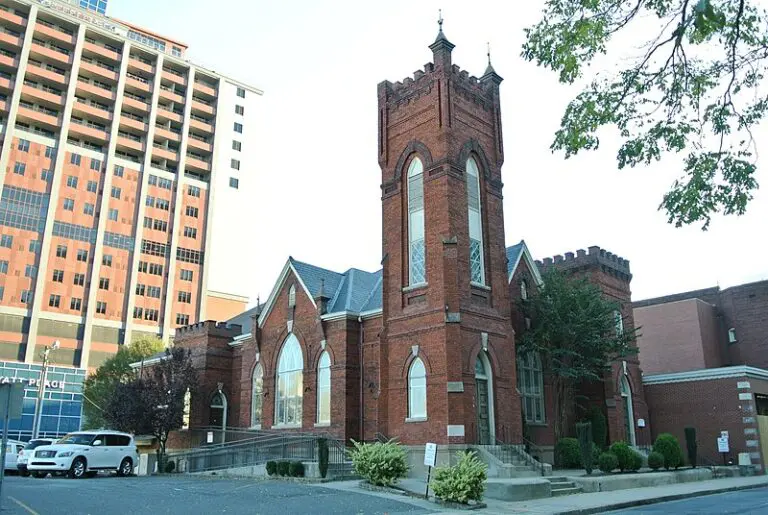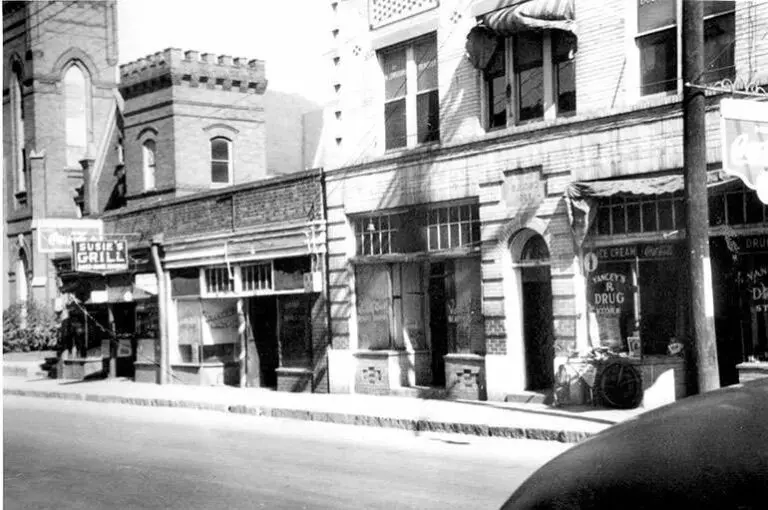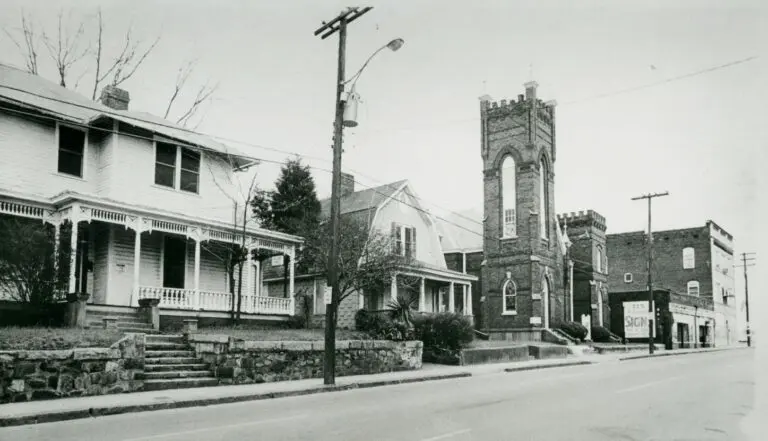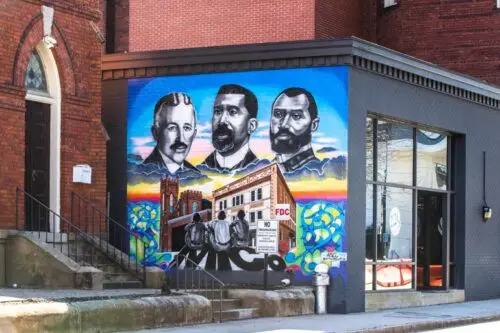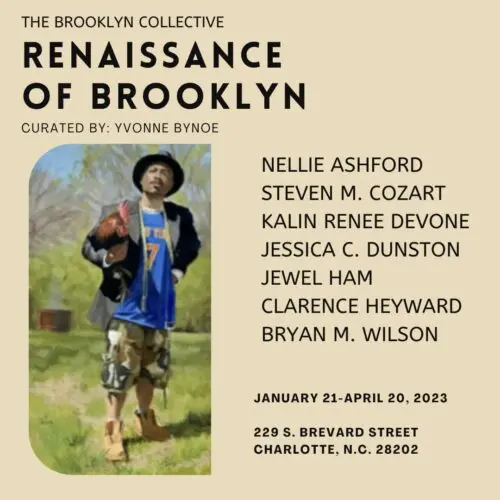The Mecklenburg Investment Company (MIC) Building is one of the few vestiges of Second Ward’s Brooklyn community left in Uptown. Driving down Brevard Street, you’ll come to the MIC, which looks out of place and out of time compared to the modern high-rises and skyscrapers surrounding it.
Brooklyn was a historically and predominately Black neighborhood in Charlotte’s Second Ward. Brooklyn has been described by many as a thriving self-sustainable city within a city. It had shops, businesses, restaurants, a high school, and churches. It was only natural that it needed a building like the MIC.
The Mecklenburg Investment Company was incorporated on May 6, 1921. The MIC invested in local real estate. The MIC building was created to accommodate Black professional offices, businesses, civic organizations, and fraternal organizations. It was meant to be a hub within Brooklyn for the Black community.
The officers who made up the organization were Mr.CR. Blake, Sr., President; Mr. A.E. Spears, Vice President; Mr. Thad L. Tate, Treasurer; and Dr. A.J. Williams, Secretary. These men, along with eight other business and professional leaders, made up the Board of Directors. They were a highly accomplished group of Black businessmen and civic leaders. The Board quickly got to work purchasing the plot of land for the MIC building in July 1921.
The Board contracted W.W. Smith, a successful brick mason and contractor who is regarded as Charlotte’s first Black architect. He also constructed Grace A.M.E. Zion Church on Brevard Street. The building was estimated to cost $28,000 and was built to accommodate six stores on the first floor, sixteen offices on the second floor, and four offices and an assembly room on the third floor.
By April 1922, Smith had gotten a building permit from the city, and construction for the MIC was completed in late 1922. It was the first building in Charlotte built by and for Black professionals. Before the MIC was completed, Charlotte’s Black businesses and professionals were spread throughout the city.
This building became a hub for Black businesses, professional offices, and social organizations, where they could be under one roof. The MIC had accomplished what it set out to do. The MIC building had tenants like Dr. A.J. Williams a dentist, medical doctor offices, law offices, and the offices of other professionals.
The building itself remained a popular destination until the 1960s because of the tenants and centralized location in Brooklyn in the heart of Charlotte. The MIC was very successful and active in the community as a place, investor, and property owner. In 1943, the MIC purchased a warehouse on East Kingston Avenue from J.A. Jones Construction Company. The warehouse property had its own private access to the tracks of the nearby Southern Railway. The mortgage for the building was paid off in just ten years, so by the time the Great Depression hit, the MIC building could continue.
Even though the MIC survived the Great Depression, the urban renewal of the 1960s in Uptown Charlotte proved more than enough to destabilize its success. As Brooklyn was being destroyed, the Black community began moving out to places like West Charlotte. Second Ward was no longer a residential neighborhood. While Uptown was being torn asunder, streetcar service was disconnected, so the businesses and offices in the MIC building would have been cut off from the rest of the city. All of that contributed to a decrease in the building tenants.
Today, the Mecklenburg Investment Company Building is used by the Brooklyn Collective. The Brooklyn Collective is a nonprofit founded in 2020 by Jason Wolf, and managed by Monique Douglas, and Kevin Douglas to honor the legacy of three buildings: the MIC, Grace A.M.E. Zion Church, and Studio 229, the last remaining Brooklyn buildings. The Brooklyn Collective works to “advance the city of Charlotte’s social, political, and economic communities, just as the founders of these buildings and institutions did over a century ago.”
The Brooklyn Collective has hosted events and exhibitions in the MIC building, like the Renaissance of Brooklyn, which portrays the artists’ liked experiences and perspectives of African Americans living in Charlotte. The MIC building still houses businesses and professionals. Some of the current tenants include From One to Some, a non-profit organization based in Charlotte that empowers children of single-parent families to build a more sustainable future. Also housed there is the FACTS Initiative, a non-profit organization that focuses on providing trauma-based therapy for children and families in underserved communities and individuals who have been highly impacted by trauma and/or tragedy. The MIC building is still relevant to the community and is still bringing people together.


